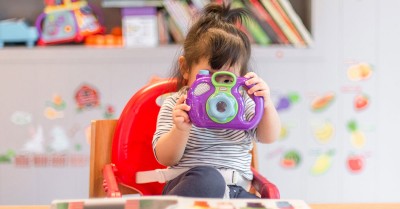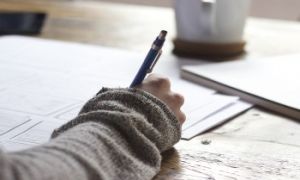The following lists the sub outcomes, examples of evidence when children can achieve each sub outcome and how educators can promote and help children to achieve EYLF Learning Outcome 1: Children Have A Strong Sense Of Identity
The foundation of children's learning, development, and well-being is a healthy identity. Children develop their own identities and learn about themselves through their interactions with other kids, their families, and their communities. This encompasses the interactions they have with other people, places, and objects as well as the deeds and reactions of others. Identity is not static; it evolves over time as a result of experiences. As they transition from one environment to another, children might have many identities.
The building blocks of identity - "Who I am," "How I belong," and "What is my influence?" - are relationships. Children's development of a positive sense of self-worth depends on the connections between educators, families, and children, which are supported by relational pedagogy. Children establish their identity through relationships and interactions with people, participating in the complexities and joys of life, and learning how to overcome problems that they face on a daily basis.
Learning Outcome 1: Children Have A Strong Sense Of Identity
Children feel safe, secure and supported
This is evident when children, for example:
- build secure attachments with one and then other familiar educators
- participate in familiar routines and rituals to make smooth transitions
- sense and respond to a feeling of belonging
- share ideas and information about their culture and cultural artefacts
- seek and connect with adults they trust to share their accomplishments and communicate their needs for comfort and assistance
- establish and maintain respectful, trusting relationships with other children and educators
- openly express their feelings and ideas in their interactions with others
- respond to ideas and suggestions from others
- initiate interactions and conversations with trusted educators
- confidently explore and engage with social and physical environments through relationships and play
- initiate and join in play
- explore aspects of identity through role play
- use home languages
- access resources that support cultural diversity, family structures and gender identities
- describe things that make them unique
- tell stories about their family and culture.
Educators promote this learning for all children when they, for example:
- acknowledge and respond sensitively to children’s cues, signals and home languages
- value and respond sensitively to children’s attempts to initiate interactions and conversations
- support children’s sense of security through consistent and warm nurturing relationships
- give children their full attention, showing interest, understanding and attunement
- design and use routines and rituals to support smooth and effective transitions
- ensure daily schedules, including individualised arrival, departure or sleep rituals that support children’s sense of security
- are attuned to children’s natural daily rhythms to support being and belonging
- learn keywords in children’s home languages and use them when greeting and talking with children
- ensure continuity to bridge the gap between the familiar and the unfamiliar, e.g. feeding and sleeping routines
- build upon culturally valued child-rearing practices and approaches to learning
- provide a culturally safe place where Aboriginal and Torres Strait Islander children and children from culturally diverse backgrounds can share their stories about history and culture
- are emotionally available, listen carefully and support children’s expression of their thoughts and feelings
- recognise children’s feelings of distress, fear or discomfort and understand that these feelings may take some time to resolve
- acknowledge each child’s uniqueness in positive ways
- provide opportunities to invite Aboriginal and Torres Strait Islander educators to provide feedback and reflections on assisting Aboriginal and Torres Strait Islander children to feel safe, secure and supported
- interact and converse with each child to establish mutual trust and respect between the families that attend the early childhood setting
- display both Aboriginal and Torres Strait Islander flags at the setting and discuss their importance for all Australians
- develop inclusive learning approaches that acknowledge different ways of knowing, being and doing
- enable children to see their culture in the environment, e.g. Aboriginal or Torres Strait Islander art from the local region, and cultural events that are significant in the child’s life.
Children develop their emerging autonomy, inter-dependence, resilience and agency
This is evident when children, for example:
- initiate exploration and independent learning
- show interest and curiosity through observing, listening, selecting and making choices
- demonstrate increasing awareness of the needs and rights of others
- are open to new challenges and discoveries
- increasingly cooperate and work collaboratively with others
- take considered risks in their decision-making and cope with the unexpected
- recognise their individual achievements and the achievements of others
- demonstrate an increasing capacity for self-regulation and self-soothing
- approach new safe situations with interest and confidence
- initiate negotiating and sharing behaviours
- persist and persevere in self-chosen tasks, including when faced with challenges and when first attempts are not successful
- cooperate and participate in routines and rituals
- show initiative by seeking information and asking questions
- learn how to stand up for themselves in appropriate ways.
Educators promote this learning for all children when they, for example:
- provide children with strategies to make informed choices about their actions, interactions and behaviours
- promote children’s sense of belonging, connectedness and wellbeing
- maintain high expectations of each child’s capabilities
- share stories with families including Aboriginal and Torres Strait Islander and culturally and linguistically diverse families about their child’s learning success
- mediate and assist children to negotiate their rights in relation to the rights of others
- provide opportunities for children to engage independently with tasks and play
- display delight, encouragement and enthusiasm for children’s attempts
- support children’s efforts, assisting and encouraging as appropriate
- motivate and encourage children to succeed when they are faced with challenges
- share stories of Aboriginal and Torres Strait Islander people who have shown agency and resilience
- provide time and space for children to engage in both individual and collaborative pursuits
- build on the culturally valued learning of individual children’s communities
- share stories that reflect children’s cultural and family diversity
- encourage children to make choices and decisions.
Children develop knowledgeable confident self-identities, and a positive sense of self-worth
This is evident when children, for example:
- express and share pleasure and pride in their own efforts, achievements and accomplishments through language, gestures, facial expressions and/or movements
- feel recognised and respected for who they are
- explore different identities, roles and points of view in pretend play
- develop strong foundations in both the culture and language/s of their family and of the broader community without compromising their cultural identities
- reach out and communicate with trusted educators and familiar children for comfort, assistance and companionship
- celebrate and share their contributions and achievements with others
- show curiosity and growing confidence in their identity as a learner
- share information about their family, culture, home languages and aspects that make them unique
- engage with Aboriginal and Torres Strait Islander Elders and community members to explore their own and others' social and cultural heritage
- take calculated risks in play and learning and begin to cope with the unexpected
- display a positive image of themselves, their families, culture and community
- acknowledge, share and celebrate Aboriginal and Torres Strait Islander traditions, customs and celebrations
- share their stories about their Country and community
- feel comfortable using their home language to construct meaning
- feel accepted and affirm their group membership
- share with others how they have learned to use digital technologies
- feel safe to participate in all activities regardless of gender, age, culture or ability
- share spaces and resources safely and equitably regardless of gender, age, culture or ability.
Educators promote this learning for all children when they, for example:
- acknowledge and join in with children’s expressions of pleasure and pride in their efforts and accomplishments
- promote in all children a strong sense of who they are and their connectedness to others – and a shared identity as Australians
- ensure all children experience pride and confidence in their achievements
- describe and share children’s successes with families
- show respect for, and celebrate, diversity, acknowledging the varying approaches of children, families, communities and cultures
- acknowledge and understand that children construct meaning in many different ways
- demonstrate a deep understanding of each child, their family and community contexts in planning for children’s learning, development and wellbeing
- provide children with diverse examples of the many ways identities and culture are recognised and expressed
- build upon culturally and linguistically valued approaches to learning
- build on the funds of knowledge, languages and understandings that children bring
- talk with children in respectful ways about similarities and differences in people
- provide rich and diverse resources that reflect children’s social and cultural worlds
- listen to and learn about children’s understanding of themselves
- actively support the maintenance of home language and culture
- develop authentic children’s understanding of themselves
- provide books and other resources that depict diverse gender roles and identities respectfully
- support sharing of spaces and resources safely and equitably
- acknowledge each child’s family, culture and individual uniqueness in positive ways
- support all children to access science and technology experiences safely regardless of gender, age, culture or ability
- recognise disability as a form of diversity and demonstrate inclusive approaches in their interactions with children
- implement approaches to support gifted and talented children
- provide inclusive indoor and outdoor environments that incorporate reasonable adjustments where there are barriers to participation
- have opportunities to develop knowledge and understanding of Aboriginal and Torres Strait Islander relationships and connections to Country and family including kinships systems
- support children to identify and assess risks in play and learning and to cope with the unexpected.
Children learn to interact in relation to others with care, empathy and respect
This is evident when children, for example:
- show interest in other children and their play
- approach and initiate interactions with other children in order to form or be part of a group
- engage in and contribute to shared play experiences
- express a wide range of emotions, thoughts and views constructively
- help and offer care to other children
- recognise and name a range of feelings in themselves and others
- empathise with and express concern for others
- appreciate the need to take turns and wait so that others can have their turn
- co-use and collaborate with others when using digital technologies
- display awareness of and respect for others’ perspectives
- display awareness of and respect for children’s diverse worlds, e.g. culture, family structure, capabilities and strengths
- reflect on their actions and consider the consequences for others
- name and challenge unfair acts, and discrimination on behalf of themselves and others
- listen to others’ opinions or points of view
- recognise safe and unsafe situations
- identify trusted adults and friends
- seek help from trusted adults when needed
- express their views
- raise concerns or requests
- participate in discussions and decision-making.
Educators promote this learning for all children when they, for example:
- initiate one-to-one interactions with children, particularly with very young children, during daily routines
- pay attention to, appreciate and acknowledge children’s independent efforts to approach and initiate interactions with other children
- organise learning environments in ways that promote small group interactions and play experiences
- facilitate sharing of equipment and turn-taking, being mindful of children’s differing capacities to wait
- model care, empathy and respect for children, colleagues and families
- provide a culturally safe and secure environment for all
- provide secure and predictable environments, relationships and engagement in learning to support children affected by trauma
- build awareness of different emotions by modelling and naming feelings
- support children to learn about and recognise safe and unsafe situations
- model how to respond appropriately to unfairness, challenge stereotypes and discrimination in respectful ways
- explain and provide self-regulation strategies using books and pictures of emotional states
- model explicit communication strategies to support children to initiate interactions and join in play and social experiences in ways that sustain productive relationships with other children
- acknowledge children’s complex relationships and sensitively intervene in ways that promote consideration of alternative perspectives and social inclusion
- provide opportunities for all children to develop knowledge and understanding of Aboriginal and Torres Strait Islander history and culture in the context of their community
- use a range of teaching strategies and multicultural resources to acknowledge and show respect for differences, e.g. multicultural dolls, books and artefacts
- facilitate child-friendly ways for children to express their views and raise their concerns
- enable children to participate in decision-making that affects them.
Further Reading
EYLF Learning Outcomes Version 2.0 - The following articles list the 5 EYLF Learning Outcomes and their sub-outcomes (Version 2.0).
EYLF Outcome 2 - Children Are Connected With And Contribute To Their World V2.0 - The following lists the sub-outcomes, examples of evidence when children achieve each sub-outcome and how educators can promote and help children to achieve EYLF Outcome 2 - Children Are Connected With And Contribute To Their World V2.0.
EYLF Outcome 3 - Children Have A Strong Sense Of Wellbeing V2.0 - The following lists the sub-outcomes, examples of evidence when children achieve each sub-outcome and how educators can promote and help children to achieve EYLF Outcome 3 - Children Have A Strong Sense Of Wellbeing V2.0.
EYLF Outcome 4 - Children Are Confident And Involved Learners V2.0 - The following lists the sub-outcomes, examples of evidence when children achieve each sub-outcome and how educators can promote and help children to achieve EYLF Outcome 4 - Children Are Confident And Involved Learners V2.0.
EYLF Outcome 5 - Children Are Effective Communicators V2.0 - The following lists the sub-outcomes, examples of evidence when children achieve each sub-outcome and how educators can promote and help children to achieve EYLF Outcome 5 - Children Are Effective Communicators V2.0.







 Here is the list of the EYLF Learning Outcomes that you can use as a guide or reference for your documentation and planning. The EYLF
Here is the list of the EYLF Learning Outcomes that you can use as a guide or reference for your documentation and planning. The EYLF The EYLF is a guide which consists of Principles, Practices and 5 main Learning Outcomes along with each of their sub outcomes, based on identity,
The EYLF is a guide which consists of Principles, Practices and 5 main Learning Outcomes along with each of their sub outcomes, based on identity, This is a guide on How to Write a Learning Story. It provides information on What Is A Learning Story, Writing A Learning Story, Sample
This is a guide on How to Write a Learning Story. It provides information on What Is A Learning Story, Writing A Learning Story, Sample One of the most important types of documentation methods that educators needs to be familiar with are “observations”. Observations are crucial for all early childhood
One of the most important types of documentation methods that educators needs to be familiar with are “observations”. Observations are crucial for all early childhood To support children achieve learning outcomes from the EYLF Framework, the following list gives educators examples of how to promote children's learning in each individual
To support children achieve learning outcomes from the EYLF Framework, the following list gives educators examples of how to promote children's learning in each individual Reflective practice is learning from everyday situations and issues and concerns that arise which form part of our daily routine while working in an early
Reflective practice is learning from everyday situations and issues and concerns that arise which form part of our daily routine while working in an early Within Australia, Programming and Planning is reflected and supported by the Early Years Learning Framework. Educators within early childhood settings, use the EYLF to guide
Within Australia, Programming and Planning is reflected and supported by the Early Years Learning Framework. Educators within early childhood settings, use the EYLF to guide When observing children, it's important that we use a range of different observation methods from running records, learning stories to photographs and work samples. Using
When observing children, it's important that we use a range of different observation methods from running records, learning stories to photographs and work samples. Using This is a guide for educators on what to observe under each sub learning outcome from the EYLF Framework, when a child is engaged in
This is a guide for educators on what to observe under each sub learning outcome from the EYLF Framework, when a child is engaged in The Early Years Learning Framework describes the curriculum as “all the interactions, experiences, activities, routines and events, planned and unplanned, that occur in an environment
The Early Years Learning Framework describes the curriculum as “all the interactions, experiences, activities, routines and events, planned and unplanned, that occur in an environment


